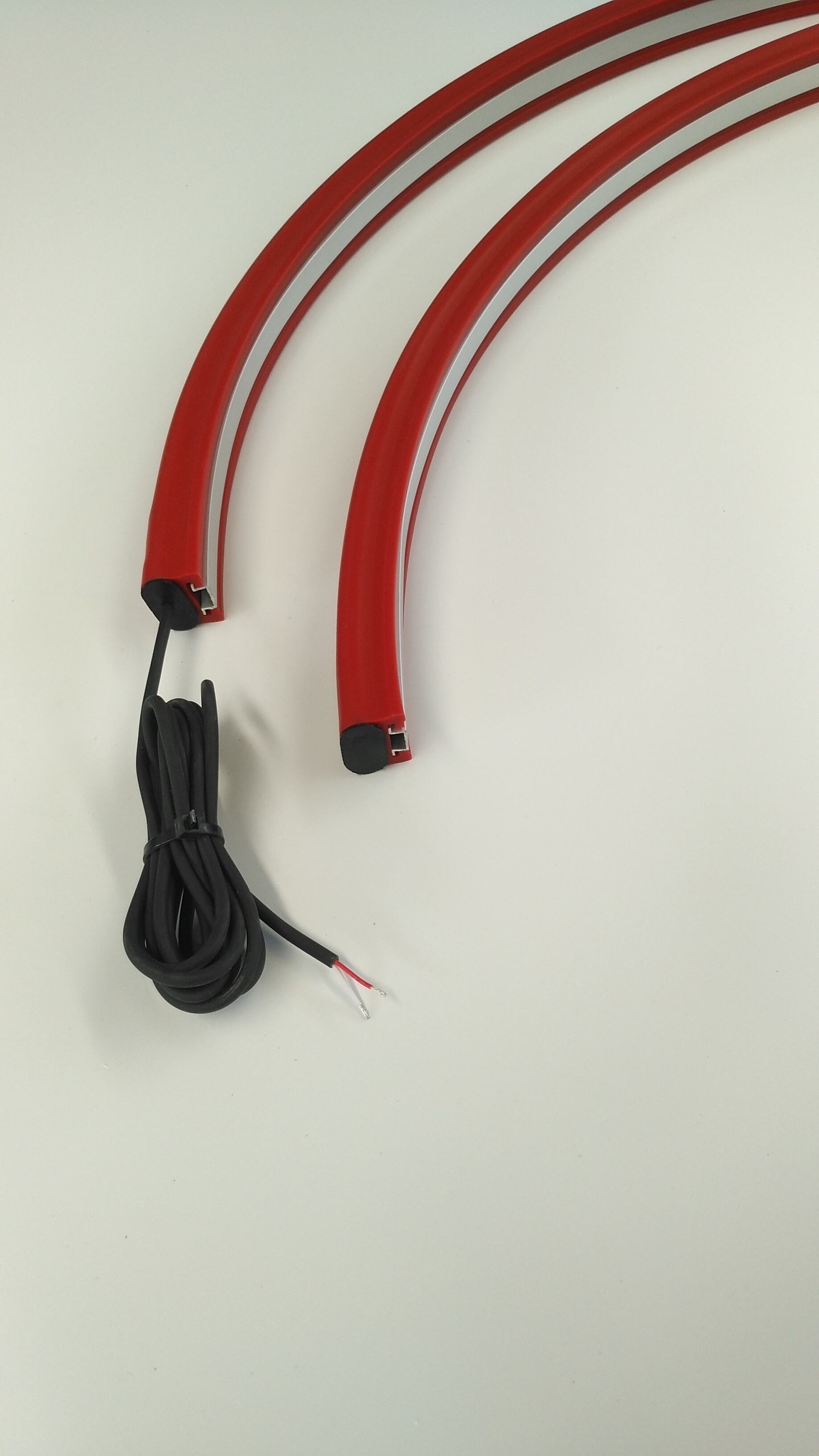आधुनिक यन्त्रका लागि सुरक्षा एज सेन्सर प्रविधिको बारेमा बुझ्नुहोस्
आजको औद्योगिक वातावरणमा, कर्मचारी र उपकरणहरूको सुरक्षा अत्यावश्यक बनेको छ, जसले सुरक्षा एज सेन्सर स्थापनालाई मेशिन संचालक र सुविधा प्रबन्धकहरूका लागि आवश्यक विचार बनाउँछ। यी उन्नत सुरक्षा उपकरणहरू दबाब महसुस भएपछि तुरुन्त मेशिन संचालन रोकेर दुर्घटना र घाइतेहरूको विरुद्ध पहिलो पंक्तिको रक्षाको रूपमा काम गर्दछन्। उचित स्थापना प्रक्रियाहरू लागू गरेर, तपाईंले उपकरणको दीर्घतम जीवनकाल बढाउँदा साथै सुरक्षा नियमहरूको अनुपालन गर्दा उत्कृष्ट प्रदर्शन सुनिश्चित गर्न सक्नुहुन्छ।
सुरक्षा एज सेन्सरहरूले दबाब-संवेदनशील प्रविधिको माध्यमबाट विश्वसनीय सुरक्षा प्रदान गर्दै यन्त्र सुरक्षा प्रणालीको एक महत्त्वपूर्ण घटकको रूपमा काम गर्छन्। यी सेन्सरहरूले न्यूनतम सम्पर्क पनि पत्ता लगाउन सक्छन् र दुर्घटनाहरू रोक्न तथा संचालक र उपकरण दुवैको सुरक्षा गर्न तुरुन्तै प्रतिक्रिया दिन्छन्। कार्यस्थलको सुरक्षा बनाइ राख्न र तपाईंको यन्त्रहरूको निरन्तर संचालन सुनिश्चित गर्न उचित स्थापना प्रक्रियाको बारेमा जान्नु अत्यन्त आवश्यक छ।
स्थापना गर्नुभन्दा पहिले आवश्यक तयारी कदमहरू
साइट मूल्याङ्कन गर्नु
सुरक्षा एज सेन्सर स्थापना गर्न थाल्नु भन्दा पहिले, तपाईंको यन्त्रको विशिष्ट आवश्यकताहरू र वातावरणीय अवस्थाहरू मूल्याङ्कन गर्नु महत्त्वपूर्ण छ। सेन्सर लगाउने ठाउँको माउन्टिङ सतहलाई जाँच गरेर सुरु गर्नुहोस्, यो सफा, स्थिर र कुनै मलबे वा क्षति बाट मुक्त छ भनी सुनिश्चित गर्नुहोस्। सुरक्षा आवश्यकता भएका क्षेत्रहरूको आयाम र आकारहरू दस्तावेजीकरण गर्नुहोस्, किनभने यस जानकारीले उपयुक्त सेन्सर आकार र विन्यास छान्न महत्त्वपूर्ण हुनेछ।
तापमान परिवर्तन, रासायनिक पदार्थहरूको संपर्क र सेन्सरको प्रदर्शनलाई असर गर्न सक्ने यान्त्रिक तनाव जस्ता कारकहरू विचार गर्नुहोस्। यस मूल्याङ्कनले अतिरिक्त सुरक्षा उपायहरू वा विशेष माउन्टिङ विचारहरू आवश्यक छ कि छैन निर्धारण गर्न मद्दत गर्दछ। कुनै चलिरहेका भागहरूलाई ध्यानमा राख्नुहोस् र यो सुनिश्चित गर्नुहोस् कि योजना बनाइएको स्थापनाले सामान्य यन्त्र संचालनमा हस्तक्षेप गर्दैन।
आवश्यक औजार र सामग्रीहरू संकलन गर्नु
सुरक्षा एज सेन्सर स्थापनामा सफलता प्राप्त गर्न कार्यक्षम उपकरण र सामग्रीहरू प्रयोग गर्नु धेरै महत्वपूर्ण छ। मापन यन्त्र, चिह्नन उपकरण, उपयुक्त फास्टनरहरू, र निर्माताद्वारा सिफारिस गरिएको कुनै विशेष उपकरण सहितको व्यापक औजार सेट तयार पार्नुहोस्। तपाईंको विशिष्ट सेन्सर मोडेलका लागि निर्दिष्ट माउन्टिङ ब्राकेट, एडहेसिभ वा यान्त्रिक फास्टनरहरू उपलब्ध छन् भनी सुनिश्चित गर्नुहोस्।
दस्ताना, सुरक्षा चश्मा, र उपयुक्त लुगा जस्ता सुरक्षा उपकरणहरू समावेश गर्न नबिर्सनुहोस्। सबै सामग्रीहरू व्यवस्थित र सजिलै उपलब्ध हुनुले स्थापना प्रक्रियालाई सरल बनाउँछ र गलत सामग्री प्रयोग गर्नुको कारणले हुने ढिलाइ वा अनुचित माउन्टिङबाट बच्न मद्दत गर्छ।
क्रमिक प्रतिष्ठापन प्रक्रिया
सही माउन्टिंग तकनीकहरू
सुरक्षा किनारा सेन्सर स्थापनाको माउन्टिङ चरणले विस्तृत ध्यान आवश्यक पर्दछ। तपाईंले अघि मापन गरेका आयामहरूको आधारमा माउन्टिङ स्थितिहरू चिन्ह लगाउनुहोस्। अधिकतम चिपकाउ निश्चित गर्न उपयुक्त सफाई एजेन्ट प्रयोग गरी माउन्टिङ सतहलाई पूर्ण रूपमा सफा गर्नुहोस्। यदि यान्त्रिक फास्टनरहरू प्रयोग गर्दै हुनुहुन्छ भने, निर्माताको विनिर्देशहरूको अनुसार प्रि-ड्रिल गर्नुहोस् ताकि यन्त्रको संरचनात्मक बलियोपनलाई खतरा नपु¥योस्।
निर्माताको दिशानिर्देशहरू अनुसार माउन्टिङ ब्राकेट वा चिपकने स्ट्रिपहरू लगाउनुहोस्, जसले गर्दा दबाव समान रूपमा वितरण हुन्छ। धेरै सुरक्षा किनारा सेन्सरहरूले उत्तम प्रदर्शनको लागि विशिष्ट अभिविन्यास आवश्यकता पर्दछ, त्यसैले स्थायी तौरमा जडान गर्नुभन्दा पहिले सही स्थिति पुष्टि गर्नुहोस्। यदि चिपकने प्रयोग गर्नुभएको छ भने, उचित घनीभूत हुने समय दिनुहोस्, र सबै यान्त्रिक फास्टनरहरूको ठीक तरिकाले कसिएको छ कि छैन दोहोर्याएर जाँच गर्नुहोस्।
वैद्युतीय कनेक्शन र वायरिङ
सुरक्षा किनारा सेन्सर को कार्यक्षमताका लागि उचित विद्युतीय एकीकरण महत्वपूर्ण छ। आफ्नो स्थापना म्यानुअलमा सही वायरिङ डायग्राम पहिचान गरेर सुरु गर्नुहोस्। कुनै पनि विद्युतीय कार्य सुरु गर्नुभन्दा पहिला मेसिनलाई पूर्ण रूपमा बिजुलीबाट अलग गर्नुहोस्। झूटा संकेत वा संचालन समस्याबाट बच्नका लागि उच्च-भोल्टेज लाइनहरू र वैद्युत चुम्बकीय हस्तक्षेपका स्रोतहरूबाट टाढा सेन्सर केबलहरू निर्देशित गर्नुहोस्।
सम्बन्धित सुरक्षा मानकहरू र निर्माताको विनिर्देशन अनुसार तपाईंको मेसिनको सुरक्षा सर्किटमा सेन्सर जडान गर्नुहोस्। उपयुक्त तार गेजहरू प्रयोग गर्नुहोस् र सबै जडानहरू उचित रूपमा इन्सुलेटेड र सुरक्षित भएको सुनिश्चित गर्नुहोस्। भावी रखरखाव र समस्या समाधानका लागि सबै तारहरू स्पष्ट रूपमा लेबल गर्नुहोस्।
परीक्षण र मान्यीकरण प्रक्रियाहरू
प्रारम्भिक कार्यक्षमता परीक्षण
स्थापना पछि, सुरक्षित किनारा सेन्सरको उचित संचालनलाई पुष्टि गर्न व्यापक परीक्षण आवश्यक हुन्छ। मूल कार्यक्षमता परीक्षणबाट सुरु गर्नुहोस्, सेन्सरको विभिन्न बिन्दुमा हल्का दबाब दिएर सुसंगत प्रतिक्रिया जाँच गर्नुहोस्। मेसिनको रोक्ने कार्यलाई निगरानी गर्नुहोस् ताकि सेन्सरलाई छुँदा तुरुन्त सक्रिय हुन्छ भनी सुनिश्चित गर्न सकौं। प्रतिक्रिया समयलाई दस्तावेजीकरण गर्नुहोस् र यसले तपाईंको विशिष्ट अनुप्रयोगका लागि सुरक्षा आवश्यकताहरू पूरा गर्दछ भनी पुष्टि गर्नुहोस्।
यदि लागू हुन्छ भने विभिन्न वातावरणीय अवस्थामा सेन्सरको परीक्षण गर्नुहोस्, जस्तै तापमान वा ओस जस्ता स्तरमा परिवर्तन। यसले वास्तविक संचालनमा प्रदर्शनलाई प्रभावित गर्न सक्ने सम्भावित समस्याहरू पहिचान गर्न मद्दत गर्दछ। अनुपालन दस्तावेजीकरण र भावी सन्दर्भका लागि सबै परीक्षण परिणामहरूको विस्तृत रेकर्ड राख्नुहोस्।
दीर्घकालीन प्रदर्शन निगरानी
तपाईंको सुरक्षा एज सेन्सरको निरन्तर विश्वसनीय संचालन सुनिश्चित गर्न मजबूत निगरानी प्रणाली स्थापना गर्नुहोस्। भौतिक क्षति, उचित संरेखण र सुरक्षित माउन्टिङको जाँच गर्न नियमित निरीक्षण तालिका लागू गर्नुहोस्। सफा गर्ने प्रक्रिया, जडानको पुष्टि र प्रतिक्रिया समय परीक्षण समावेश गर्ने रखरखाव जाँच सूची बनाउनुहोस्।
समयको साथै सेन्सर प्रदर्शनमा भएको कुनै पनि परिवर्तनलाई कागजात गर्नुहोस् र रखरखाव वा प्रतिस्थापन कार्यहरू सुरु गर्ने सीमा मानहरू निर्धारण गर्नुहोस्। नियमित निगरानीले अप्रत्याशित असफलताहरूलाई रोक्न र तपाईंको यन्त्र र संचालकहरूका लागि उच्चतम स्तरको सुरक्षा सुरक्षाको बनाए राख्न मद्दत गर्दछ।
रखै र त्रUBLESHOOTING मार्गदर्शन
नियमित रूपमा रखरखाई कार्यहरू
सुरक्षा एज सेन्सरहरूको सुरक्षा कायम राख्न क्रमबद्ध दृष्टिकोण आवश्यक हुन्छ ताकि निरन्तर प्रदर्शन सुनिश्चित गर्न सकौं। निर्माताले स्वीकृत विधि र सामग्री प्रयोग गरी नियमित सफाई तालिका विकास गर्नुहोस्। माउन्टिङ हार्डवेयर र ब्राकेटहरूमा घिस्रेको वा ढिलो भएको चिन्हहरू जाँच गर्नुहोस्, आवश्यकता अनुसार कम्पोनेन्टहरू कस्नुहोस् वा बदल्नुहोस्। विद्युतीय कनेक्शनहरूमा नियमित रूपमा जंग लाग्ने वा क्षतिको जाँच गर्नुहोस्, र उचित इन्सुलेशन अखण्डता सत्यापन गर्नुहोस्।
सबै निरीक्षण, सफाई कार्यहरू, र गरिएका मर्मतसम्भारहरूको विस्तृत रखरखाव लगहरू राख्नुहोस्। यो प्रलेखनले सेन्सरको प्रदर्शन ट्र्याक गर्न मद्दत गर्ने मात्र होइन, अनुपालन लेखा परीक्षण र भावी रखरखाव योजना को लागि पनि मूल्यवान जानकारी प्रदान गर्दछ।
आम दुव्धर्महरू र समाधानहरू
सम्भावित समस्याहरू र तिनका समाधानहरू बुझ्नले सुरक्षा किनारा सेन्सरको प्रदर्शनलाई उत्तम बनाए राख्न मद्दत गर्दछ। सेन्सरको कार्यलाई खराब पार्न सक्ने कट, फाँट, वा विकृति जस्ता भौतिक क्षतिका संकेतहरूमा ध्यान दिनुहोस्। हस्तक्षेप वा यांत्रिक तनावका सम्भावित स्रोतहरूको जाँच गरेर झूटा संकेतहरूलाई समाधान गर्नुहोस्। आन्तरिक सेन्सरको क्षयको संकेत हुन सक्ने प्रतिक्रिया समयमा आएका परिवर्तनहरू निगरानी गर्नुहोस्।
समस्या आएमा विशिष्ट निदान प्रक्रियाका लागि निर्माताको समस्या निवारण मार्गदर्शिका संग सम्पर्क गर्नुहोस्। सामान्य प्रतिस्थापन आवश्यकताका लागि स्पेयर पार्टहरू साइडमा राख्नुहोस्, र अधिक जटिल समस्याहरू आएमा प्राविधिक सहयोगको लागि सम्पर्क जानकारी राख्नुहोस्।
बारम्बार सोधिने प्रश्नहरू
सुरक्षा किनारा सेन्सरहरू कति बार परीक्षण गर्नुपर्छ?
सुरक्षा एज सेन्सरहरूले कम्तिमा मासिक कार्यात्मक परीक्षण गर्नुपर्छ, उच्च उपयोग भएका अनुप्रयोगहरू वा कठोर वातावरणका लागि बढी बारम्बार परीक्षण गर्न सिफारिस गरिन्छ। यसको अतिरिक्त, प्रतिक्रिया समयको पुष्टि र सबै घटकहरूको भौतिक जाँच सहितको त्रैमासिक व्यापक प्रदर्शन परीक्षण गर्नुपर्छ।
कुन कुन वातावरणीय कारकहरूले सेन्सरको प्रदर्शनलाई प्रभावित गर्न सक्छन्?
तापक्रमको चरम स्थिति, आर्द्रता, रासायनिक संपर्क, र भौतिक प्रभावले सबैले सुरक्षा एज सेन्सरको प्रदर्शनलाई प्रभावित गर्न सक्छ। तपाईंको विशिष्ट वातावरणीय अवस्थाका लागि तपाईंले छान्नु भएको सेन्सर उपयुक्त दर्जा प्राप्त भएको छ भनी सुनिश्चित गर्नुहोस् र आवश्यकता परेमा उपयुक्त सुरक्षा उपायहरू लागू गर्नुहोस्।
सुरक्षा एज सेन्सर कहिले बदल्नुपर्छ?
सेन्सरले भौतिक क्षति, संवेदनशीलतामा कमी, अनियमित प्रतिक्रिया समय, वा निर्माताद्वारा निर्दिष्ट सेवा जीवन पुगेपछि देखाउँदा सुरक्षा एज सेन्सर बदल्नुपर्छ। नियमित परीक्षण र निगरानीले असफल हुनुभन्दा अघि बदलावको आवश्यकता पत्ता लगाउन मद्दत गर्दछ।

